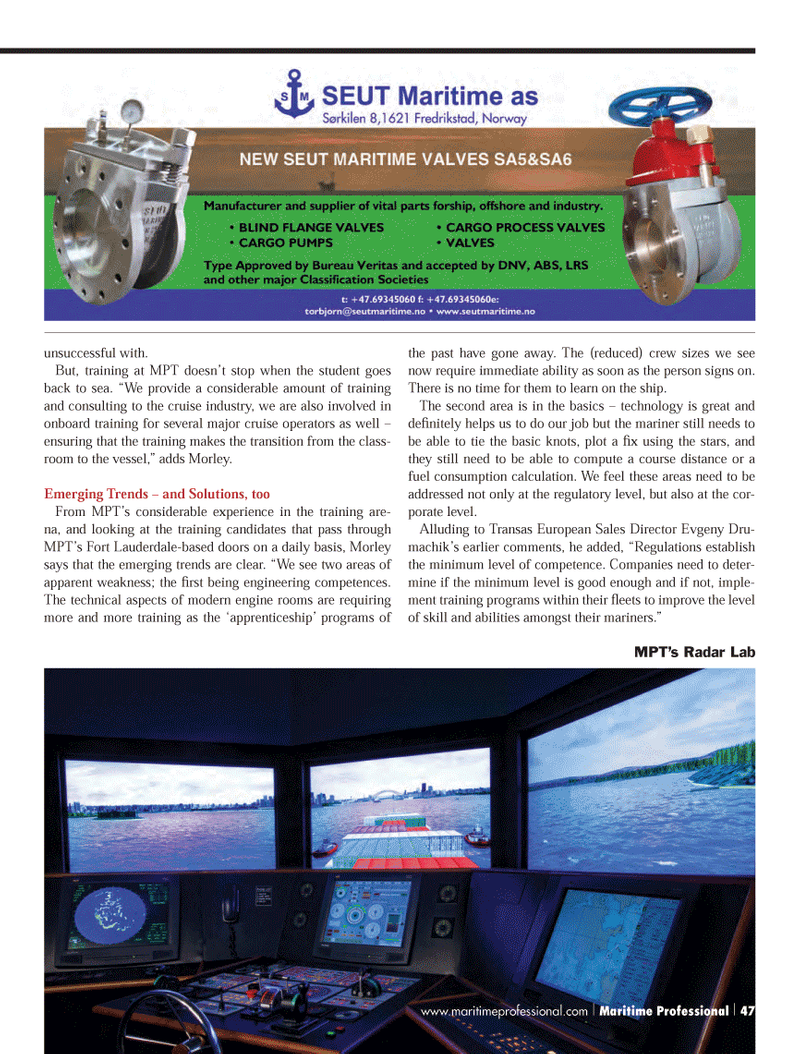
Page 47: of Maritime Logistics Professional Magazine (Q3 2013)
Training & Security
Read this page in Pdf, Flash or Html5 edition of Q3 2013 Maritime Logistics Professional Magazine
unsuccessful with. But, training at MPT doesn?t stop when the student goes back to sea. ?We provide a considerable amount of training and consulting to the cruise industry, we are also involved in onboard training for several major cruise operators as well ? ensuring that the training makes the transition from the class- room to the vessel,? adds Morley. Emerging Trends ? and Solutions, too From MPT?s considerable experience in the training are- na, and looking at the training candidates that pass through MPT?s Fort Lauderdale-based doors on a daily basis, Morley says that the emerging trends are clear. ?We see two areas of apparent weakness; the rst being engineering competences. The technical aspects of modern engine rooms are requiring more and more training as the ?apprenticeship? programs of the past have gone away. The (reduced) crew sizes we see now require immediate ability as soon as the person signs on. There is no time for them to learn on the ship. The second area is in the basics ? technology is great and de nitely helps us to do our job but the mariner still needs to be able to tie the basic knots, plot a x using the stars, and they still need to be able to compute a course distance or a fuel consumption calculation. We feel these areas need to be addressed not only at the regulatory level, but also at the cor- porate level. Alluding to Transas European Sales Director Evgeny Dru- machik?s earlier comments, he added, ?Regulations establish the minimum level of competence. Companies need to deter- mine if the minimum level is good enough and if not, imple- ment training programs within their eets to improve the level of skill and abilities amongst their mariners.? MPT?s Radar Lab www.maritimeprofessional.com | Maritime Professional | 47MP #3 34-49.indd 47MP #3 34-49.indd 479/10/2013 11:16:14 AM9/10/2013 11:16:14 AM

 46
46

 48
48
